第八次作业
#1. 选取数据空间中的K个对象作为初始中心,每个对象代表一个聚类中心
import numpy as np x=np.random.randint(1,100,[20,1]) x=np.random.randint(1,100,[20,1]) y=np.zeros(20) k=3 x
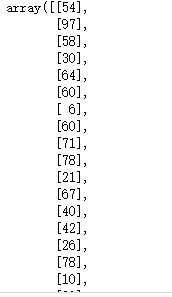

def initcenter(x,k):#初始聚类中心数组 return x[:k] def nearest(kc,i):#距离绝对值 d=(abs(kc-i)) w=np.where(d==np.min(d)) return w[0][0] def xclassify(x,y,kc): for i in range(x.shape[0]):#对数组的每个值进行分类 y[i]=nearest(kc,x[i]) return y kc=initcenter(x,k) y=xclassify(x,y,kc) print(kc,y)

#计算各聚类新均值 def kcmean(x,y,kc,k): l = list(kc) flag = False for c in range(k): print(c) m = np.where(y == c) n=np.mean(x[m]) if l[c] != n: l[c] = n #聚类中心发生变化 flag = True #print(l,flag) return (np.array(l),flag) k = 3 kc = initcenter(x,k) flag = True print(x,y,kc,flag)
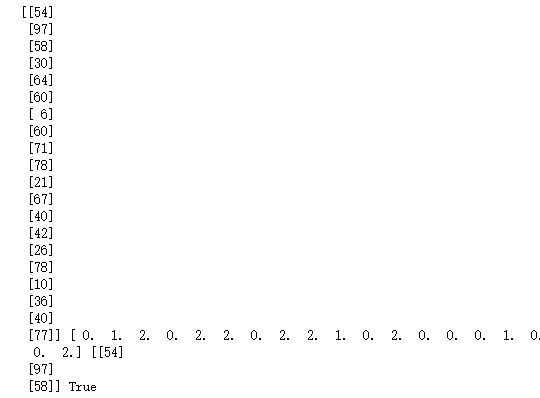
#判断聚类中心和目标函数的值是否发生改变,若不变,则输出结果,若改变,则返回2 while flag: y = xclassify(x,y,kc) kc, flag = kcmean(x,y,kc,k) print(y,kc,type(kc)) print(x,y) import matplotlib.pyplot as plt plt.scatter(x,x,c=y,s=50,cmap="rainbow"); plt.show()
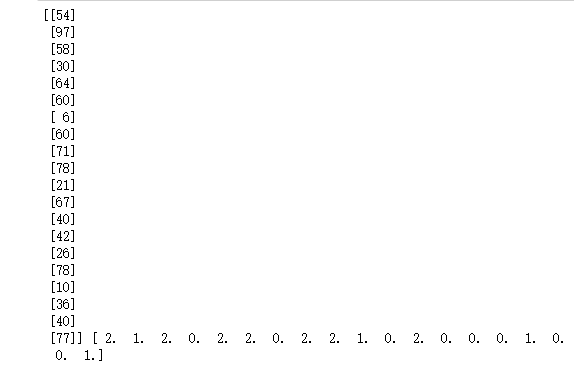
#2. 鸢尾花花瓣长度数据做聚类并用散点图显示 import numpy as np from sklearn.datasets import load_iris iris = load_iris() x = iris.data[:, 1] y = np.zeros(150) def initcent(x, k): # 初始聚类中心数组 return x[0:k].reshape(k) def nearest(kc, i): # 数组中的值,与聚类中心最小距离所在类别的索引号 d = (abs(kc - i)) w = np.where(d == np.min(d)) return w[0][0] def kcmean(x, y, kc, k): # 计算各聚类新均值 l = list(kc) flag = False for c in range(k): m = np.where(y == c) n = np.mean(x[m]) if l[c] != n: l[c] = n flag = True # 聚类中心发生变化 return (np.array(l), flag) def xclassify(x, y, kc): for i in range(x.shape[0]): # 对数组的每个值分类 y[i] = nearest(kc, x[i]) return y k = 3 kc = initcent(x, k) flag = True print(x, y, kc, flag) while flag: y = xclassify(x, y, kc) kc, flag = kcmean(x, y, kc, k) print(y, kc, type(kc)) import matplotlib.pyplot as plt plt.scatter(x,x,c=y,s=50,cmap='rainbow',marker='p',alpha=0.5) plt.show()
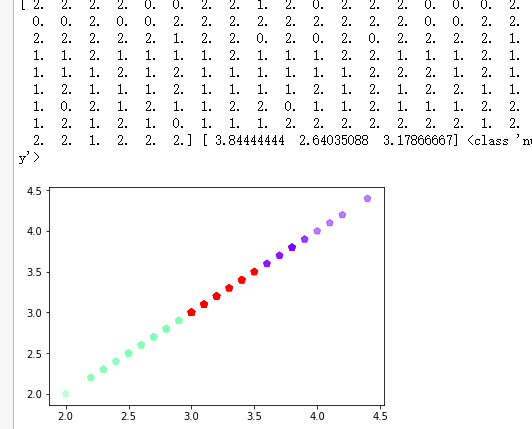
#3.用sklearn.cluster.KMeans,鸢尾花花瓣长度数据做聚类并用散点图显示 import numpy as np from sklearn.cluster import KMeans from sklearn.datasets import load_iris import matplotlib.pyplot as plt iris_data = load_iris() X=iris_data.data petal_length = X[:, 2:3] x= petal_length print(x) k_means = KMeans(n_clusters=3) est = k_means.fit(x) kc = est.cluster_centers_ y_kmeans = k_means.predict(x) plt.scatter(x,np.linspace(1,150,150),c=y_kmeans,marker='o',cmap='rainbow',linewidths=4) plt.show()
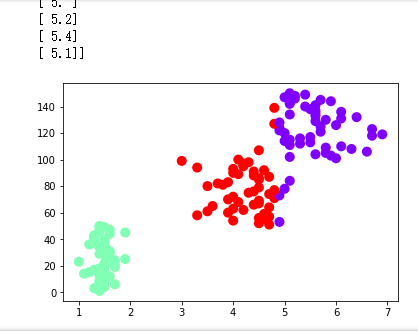
#4. 鸢尾花完整数据做聚类并用散点图显示 import matplotlib.pyplot as plt import numpy as np from sklearn.datasets import load_iris iris = load_iris() X = iris.data X from sklearn.cluster import KMeans est = KMeans(n_clusters = 3) est.fit(X) kc = est.cluster_centers_ y_kmeans = est.predict(X) #预测每个样本的聚类索引 print(y_kmeans,kc) print(kc.shape,y_kmeans.shape,np.shape) plt.scatter(X[:,0],X[:,1],c=y_kmeans,s=50,cmap='rainbow'); plt.show()



